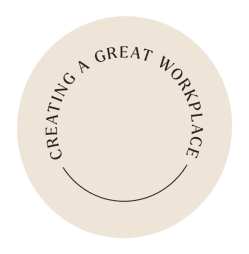This month we are featuring an interview with Laurie Barnett, Managing Director Communications & Outreach for Southwest Airlines, to bring you an inside view to the company’s COVID response. I hope the content inspires you to go build a culture of enduring greatness in your own organization!
Special note from Laurie: At Southwest, in our writing style guide we capitalize the E in Employee, the C in Customer and the V in Values to give those words the emphasis that they deserve.
GH: As part of your role for oversight of Southwest Airlines Emergency Response Plan, tell us about your advance planning for a pandemic.
LB: Southwest Airlines maintains a disaster response plan as an umbrella plan. The “pandemic response checklist” is a part of that plan, and we’ve had it in place since 2009. If you’ll recall, in 2009, we were dealing with H1N1 outbreak that affected many airlines. As a result, we used the framework of our disaster response plan and essentially built out a checklist as we were dealing with what was being thrown at us. We’ve only had to draw upon this plan a few times over the years. Due to the severity and duration of the COVID-19 Pandemic we have definitely learned a great deal about what a comprehensive response should look like, as it has been much more impactful than previous disasters. We are even evolving our plan with lessons learned as we speak.
Since the 90s we’ve had a robust emergency response program, but this situation has been different due to the extra-ordinary impact to every facet of our business. Regardless of the crisis at hand, all of our plans rely on a consistent framework, and that involves engaging key leaders and subject matter experts to collaboratively address the challenges that come our way. We rely on a disciplined approach to the way that we coordinate, communicate and report throughout the response and recovery effort.
One key thing that we do uniquely, is we have a consistent Emergency Director. For us that person is Steve Goldberg, Sr. Vice President Operations and Hospitality, who assures we have a cohesive response which includes thinking about our Employees, our Customers and the Operation collectively. I serve as leader for the team responsible for our Emergency Response function alongside Senior Director of Preparedness & Risk Management, Karie Lardon. Karie and her teams assure that we have robust business continuity and response plans in place with all the right players for any scenario.
GH: Take us in those rooms when you realized that this scenario was going to be progressing. What were some of the company’s initial steps and how has your response increased over time?
LB: We acknowledged the situation early on by first providing guidance for our flight attendants before the virus really became a wide-spread threat in the United States. As the need grew, we determined it was time to pull together our Disaster Response Team which is a group of leaders from across the company representing nearly every discipline within the airline. We started meeting at the beginning of March and we activated our Headquarters’ Emergency Command Center. As you can imagine, things took off rather quickly from there. Early on, we were working with the CDC and trying to figure out how to partner with them to manage the situations we were encountering for the first time. There was a lot of building on the fly, if you will, with the airline industry, as well as health officials, as the situation required unique procedures and guidelines for Employees and Customers. So for a period of time, we met twice daily with the Pandemic – Disaster Response Team. We would modify our approach as the situation demanded, identify new findings, tackle procedural changes, and adapt our business as new requirements developed. We had to essentially change the operation of running an airline in incremental ways in a short period of time, while always keeping the safety of our Employees and Customers top of mind. We quickly spun up smaller working teams focused on solving specific challenges such as building a layered approach to ensuring the safety of our Employees and Customers including a regimen of aircraft cleaning and adopting a personal protective equipment requirement. This work led to the launch of our Southwest Promise (in a matter of days) and formalized our commitment to a safe experience on each Southwest flight.

Now, almost five months later, we’ve gotten down to a cadence of biweekly Disaster Response Team meetings just to keep everybody informed on response efforts, along with regular Leadership meetings providing transparent updates on our business. From a communications standpoint, we’ve created more than 550 COVID-19 communication pieces, internal and external, during the period of March through June. That gives you a sense for the breadth and depth of what it’s required for a company of 60,000 employees to continue operating, providing essential air travel nationwide. We’re headquartered in Dallas, Texas where most of our response effort was centralized at the beginning, but once it was determined that we should not be working in such close proximity, we had to move the bulk of our Headquarters-based Employees to a remote work arrangement. We were able to maintain continuity in our response efforts because our emergency plan was prepared with the mechanisms to facilitate a remote response. Great tools have also played a big role. Interestingly, we had already purchased Microsoft Teams, but we had not launched it yet. So, in the midst of this crisis, we launched this new collaboration tool for our Headquarters Employees (in the initial phase), and everybody has called it a game-changer. The adoption rate and usage rate has just gone through the roof, as it has allowed our Employees to stay connected and engaged, keeping our Culture alive, despite our new work environment.
GH: So in these meetings, how often and in what instances did the topic of Culture come up in internal conversations regarding your response?
LB: We are a “people first” company – regardless of the type of crisis we’re facing, the well-being of our Employees is top of mind. While discussing any matter at hand, whether it be a virus, or a hurricane bearing down on the coast, all of our decision-making processes really focus around the Employee first. That includes their health, their safety, the company’s future viability and their jobs. We are in the service business, and we believe if you take care of your Employees, they’ll take good care of our Customers! That really is the compass that guides us when we’re making decisions. For example, in the Disaster Response meetings, The Leader over our Pilots is not just reporting about the operation and related business stats, but about the Employees’ health, their morale and what their team is doing to support each other.
Our Managing Director of Culture & Engagement, Whitney Eichinger, participates in the response efforts as well. She is listening and identifying opportunities for her team to support, boost morale during a stressful time, and help ensure that the culture is still alive. As a company, we thrive on being together, whether working or celebrating one another, we love in person connections. So, when 90% of our headquarters Employees had to shift to working remotely for months on end, this was certainly a big shock for us. The Engagement Team quickly launched Leader and Employee surveys to ask our Employees questions like: How are you doing? Are you feeling engaged, productive, and supported? How do you feel about the culture? We received valuable insights which led the Team to create new tools and resources to help sustain our culture remotely.
Our Culture & Engagement Department is a sister department to our Diversity & Inclusion Team, our People Team (H.R.), as well as the Communications & Outreach and Training & Development Teams. As Department heads, we meet weekly and solely focus on Employees’ well-being and engagement. From a Culture standpoint we are focused on supporting and engaging, rather than some of the traditional “fun-loving” activities we are known for. It isn’t a time to be overly silly for example, but what we can do is show our heart to one another, and to our Customers and communities. It has been a really fascinating few months full of pivoting and being really agile, especially from a communication and culture standpoint.
GH: Southwest Airlines can be described as purpose-driven and Values-based. What are some actions that the company took to align the COVID response for all of your audiences with the company’s Values?
LB: Our purpose at Southwest Airlines is to connect People to what’s important in their lives through friendly, reliable and low-cost air travel. Earlier this year, we rolled out a company and Employee promise as well as, a fresh look at our Values. Those Values center on Me, We & Southwest- and how we, working together achieve success. As a result, a lot of our internal communication efforts during this pandemic have been infused with those Values.
We believe Employee communication should come first — you have to equip your own people before you’re talking to the public (put your own oxygen mask on first). In order to get communication out in an effective and recurring manner, our CEO Gary Kelly expanded a video series platform we had in place called “Ask Gary.” It typically it airs a couple of times a year, but during this pandemic, we leveraged this platform and created a more regular COVID-19 series. I’m pleased to share, we have now aired thirty-nine episodes of “COVID-19 Ask Gary”. (See one of the most popular episodes here.) We take Employee’s questions and he answers them very transparently. From a Values standpoint, it is critical for us to be honest and open with our Employees. Some of that content was relevant for the public, Customers and stakeholders externally, so we would often repurpose clips in our social channels. I think communicating to Employees regularly in good times and tough times demonstrates the Values we espouse as a company.
Some other actions we took include creating a campaign using #SouthwestHeartStrong, as a symbol to our Employees, that we’re all in this together. Our CEO has also been out visiting the front lines, showing those Employees that he values their role of providing essential air travel, and he is proud to stand with them. Additionally, we sought to make critical information available to Employees in a variety of other methods, such as a dedicated COVID-19 page on our intranet for our Employees to get virus related communication they need quickly.

CEO Gary Kelly put a priority on interacting with Employees.
We also sought to help struggling small businesses by giving them Rapid Reward points. We donated snack items to numerous food banks due to our pause in serving food and beverage service. And, when we had to cancel our annual charity golf tournament, we turned that negative into a positive and gave the $1,000,000 we would have put towards the event to nonprofits in every single location that we serve. Anything we can do to keep showing our heart, even when we are going through a difficult time ourselves, that is what I think really sets us apart.
If I had to give advice to other organizations, I would say people want to hear from their leaders. Leaders need to be equipped with the facts and resources as they are the most trusted source of information for your Employees. So, an easy thing we’ve done is we’ve stepped up our regularity of leader meetings. We’ve got to be timely and transparent, sharing relevant information. We’ve got to be sure that we’re anticipating the questions Employees have and giving them the information they need, and hopefully putting them at ease, so they can continue to do their job.
GH: What do you think will be the lasting impact of COVID on some of the business operations of Southwest Airlines or on other businesses across the globe?
LB: I think it’s a reminder of the importance of being prepared during both the good times and the bad times, because the bad times will come. We were very well positioned financially and structurally as well, simply because being prepared is important to us as a company. For us, the key to navigating this situation has been being agile, resilient, and being able to quickly meet our Customer’s needs and Employees’ needs, which is our priority. Now that people have adapted to working and carrying on business remotely, I think it is going to cause business to be done differently in the future. A lot of organizations are doing online meetings instead of traveling, for example. So how can we address the challenge that business travel will slow down? We have the opportunity to inspire people, to remind them of the value of connecting in person again. Even the smallest details are important to us. For example, our hospitality team has done some research on the topic of expressing hospitality from behind a mask. They came up with some great tips for the team to start implementing. Even though we’re constantly evolving and learning how to best work through this pandemic, we’re still very focused on providing an excellent work environment and excellent Customer service. Some things remain the same.
About Laurie Barnett
Managing Director Communications & Outreach, Southwest Airlines

Laurie, a twenty three-year veteran of Southwest Airlines, is responsible for guiding the efforts of the airline’s Communications, Social Business, Enterprise Risk Management and Crisis Response Planning, and Community Outreach functions. Laurie’s experience in crisis management began in 2000 when she spearheaded the overhaul of Southwest’s Emergency Response Program, growing the Preparedness function to include Business Continuity Planning and now Enterprise Risk Management as well. As a member of the Company’s Risk and Business Continuity Committees, and Co-Chair of the Emergency Response Committee, Laurie and her Team provide crisis contingency planning, training, and response guidance to support the airline, which serves more than 100 destinations both domestic and internationally, operates more than 4,000 flights daily with 56,000 Employees.
She is one of the Company’s Strategic Crisis Advisors, with a focus on protecting Southwest’s reputation. Southwest has been named to FORTUNE Magazine’s World’s Most Admired Companies list for 24 consecutive years. Laurie and her Emergency Response Team received the Company’s prestigious President’s Award in 2005, and Heroes of the Heart award in 2018, and her Social and Communications Teams have won accolades for their creative approach to crisis response.
Laurie received her Bachelor of Science degree from Abilene Christian University. Her proudest professional moment was watching the first Southwest aircraft take off at Dallas Love Field after being grounded following the tragic events of Sept. 11, 2001. Laurie and her husband Jim live in Rockwall, Texas and have a son entering his freshman year as Texas Christian University, and daughter that is a junior at Abilene Christian University.
Together, we truly can build Unstoppable Cultures!
Sincerely,







